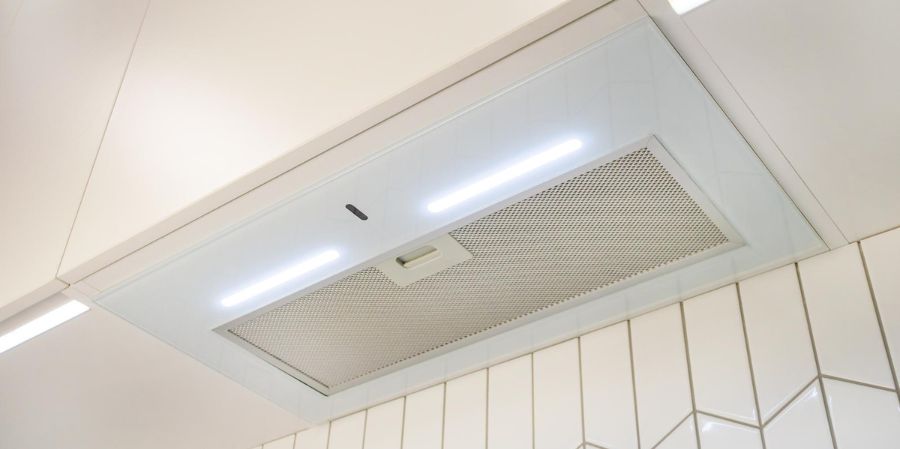- - Updated at
- Tiziano B.
- Guides
- 5406 views
Have you chosen to replace the halogen bulbs/spotlights in your hood with LEDs? As you may know, this process can bring many benefits in terms of energy efficiency and cost savings. However, despite these advantages, it also hides various technical pitfalls that many people overlook.
Although it is easy to find LED spotlights with the same dimensions as halogen spotlights, the replacement might require more complex modifications, such as changing the transformer and, in some cases, adapting the wiring.
In this article, I will explain what needs to be considered before making this replacement.
1) Differences in Spotlight Connectors: Caution During Replacement
When considering the electrical connection of the lighting, contrary to what one might think, LED spotlights do not always have connectors identical to those of halogen ones. This means that the replacement may not only involve a simple “bulb” swap but may also require adjustments to the connections.
There are two main options:
- Using a Universal Connector Such as a "Mammut": Another option is to use a universal connector, which allows you to easily connect the new LED spotlights without having to reuse the original connectors.

→ Pay Attention to Polarity: When making these modifications, it is crucial to pay special attention to the polarity of the wires, as LEDs operate on direct current (DC) and not alternating current (AC) like halogen bulbs. An incorrect connection can lead to malfunctions or damage to the LED spotlights.
2) The Transformer: Why Is It Necessary to Replace It?
Halogen bulbs, especially low-voltage ones (12V), use a transformer to step down the voltage from the electrical grid (220V) to the level needed for operation. However, these transformers are designed to work with halogen bulbs, which have different energy consumption compared to LEDs.
Since LED spotlights consume much less electricity than halogen ones, a halogen transformer might not be compatible, leading to issues such as:
- Light flickering;
- The spotlight failing to turn on;
- Premature wear of the LED spotlight.
→ Solution: It is necessary to replace the existing transformer with one specifically designed for LED bulbs. These transformers are built to work with the lower energy consumption of LEDs, ensuring stability and longer bulb life.

3) Hood Wiring: Series or Parallel Connections?
Another aspect that often complicates the replacement involves the wiring of the hood. The bulbs can be connected in series or in parallel, and understanding the difference is crucial:
- Series Connection: If one spotlight burns out, the entire circuit is interrupted, turning off all the spotlights. This type of connection is common in older installations.
- Parallel Connection: Each spotlight has an independent connection, so if one burns out, the others will continue to function.
LED spotlights often require a change in wiring if your hood uses a parallel connection. In many cases, you may need to switch to a series connection to ensure the LEDs work correctly (depending on the operating voltage of the transformer and the LED). This change may require the assistance of a qualified electrician.
4) What Happens if the Correct Modifications Are Not Made When Replacing Spotlights?
If you attempt to replace halogen spotlights with LEDs without making the necessary modifications, you may encounter several issues:
- Overheating of the Spotlights: If the system is not suitable, LEDs can overheat, reducing their lifespan.
- Constant Light Flickering: LEDs may flicker continuously due to an inappropriate transformer.
- Damage to the LEDs: An incompatible transformer can damage the LEDs, compromising their efficiency.
- Short Circuits or Electrical Malfunctions: Without suitable wiring, the electrical system could suffer severe damage, causing interruptions or malfunctions.
If you experience any of these issues, it is always best to seek the help of a professional.

In Summary: How to Proceed with Replacing Halogen Spotlights with LED Spotlights?
Here is a summary of the steps to follow for safely replacing halogen spotlights with LEDs:
- LED Spotlight Size: Ensure that the LED spotlight is similar in size to the halogen spotlight so it can fit correctly in the available space in the hood. Check the diameter and height of the spotlight to guarantee that there are no physical compatibility issues with the existing housing.
- Check the Connector: Make sure that the LED spotlights have the same connector and dimensions as the halogen ones you wish to replace. If not, modifications to the electrical connection will be necessary.
- Transformer Replacement: If you use low-voltage spotlights (12V), replace the existing transformer with one compatible with LEDs. If you are not experienced, seek the help of a technician.
- Wiring Check: If your system is connected in series, it might be necessary to modify the wiring for a parallel connection. This step requires electrical expertise, so it is advisable to hire a professional.
- Final Test: After installing the LED spotlights and making the necessary modifications, test the system. Ensure there is no flickering and that all spotlights are functioning correctly.
Assistance and Supplies at Filtro Cappa
Do you need replacement bulbs or spotlights, transformers, or more information about your hood’s lighting?
At Filtro Cappa, you can find all the accessories and spare parts your hood needs to operate at peak efficiency.
On our e-commerce site, you can find not only a wide range of compatible LED spotlights but also transformers and specific accessories for a hassle-free conversion. Visit our shop and discover how to upgrade your hood with the best LED solutions on the market.
And if you need specialized technical assistance (remotely), contact us via WhatsApp or email.



